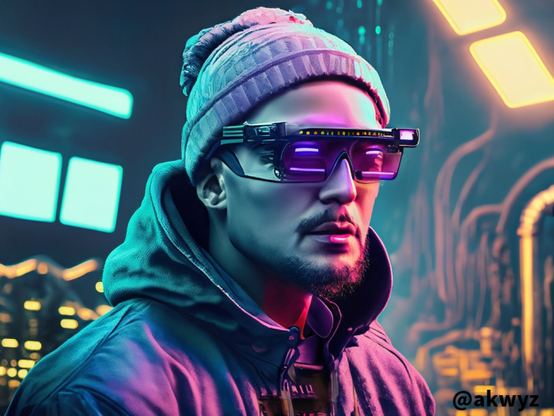Interview with Paul McDonagh-Smith, Senior Lecturer MIT Sloan School of Management
https://vimeo.com/867648293?share=copy
Interview with Paul McDonagh-Smith at Hannover Messe. Senior Lecturer at MIT Sloan School of Management & Digital Capability Leader at MIT Sloan Office of Executive Education. Advisor to NASA Goddard Space Flight Center. Paul invented and innovated with XR & metaverse across multiple industries and is Faculty Director on MIT Sloan Business Implications of Extended Reality (XR): Harnessing the Value of AR, VR, Metaverse and More. At Hannover Messe with Siemens Industry. #SIEX
akwyz
Introduction:
The metaverse, a collective virtual shared space created by the convergence of virtually enhanced physical reality, augmented reality (AR), and the internet, is a rapidly growing domain. As we delve deeper into creating metaverse products, platforms, and solutions, we encounter a myriad of challenges and opportunities. One critical aspect that demands our immediate attention is the inclusion and diversity within the metaverse solutions we are building.
The Importance of Inclusion:
When constructing metaverse solutions, it is imperative to reflect on questions regarding inclusion. We must ensure that the solutions we build are genuinely inclusive and do not introduce another layer of exclusion to certain groups of humans and communities. The essence of creating an inclusive metaverse is to foster an environment of equity and diversity, allowing users from various backgrounds to interact and coexist harmoniously within the virtual realm.
Addressing Inclusion from the Outset:
To build inclusive metaverse solutions, it is crucial to address questions of equity, diversity, and inclusion right from the beginning, even before contemplating the technological elements and tools required. This proactive approach ensures that the solutions conceived are inherently inclusive, preventing the amplification of cognitive and cultural biases from our physical world into the virtual and digital environments we are creating.
Breaking the Echo Chamber:
To truly realize an inclusive metaverse, we need to break through the echo chamber and overcome the inherent biases that exist in our physical world. It is essential to ensure that these biases are not imported and amplified in the virtual environments we are building. By addressing these biases, we can create digital spaces that are more equitable and diverse, reflecting a broad spectrum of perspectives and experiences.
Opportunities for Inclusion:
Rather than perceiving these considerations as challenges, we should view them as opportunities—opportunities for fostering inclusion, diversity, and equity within the metaverse. By embracing these opportunities, we can create metaverse solutions that not only value diversity but also generate more business value. The incorporation of diverse perspectives can lead to the creation of richer, more immersive, and more engaging virtual experiences, ultimately contributing to the overall success and growth of the metaverse.
Conclusion:
As we stand on the brink of a new era marked by the advent of the metaverse, it is our responsibility to ensure the creation of inclusive, diverse, and equitable virtual spaces. By addressing issues of inclusion and diversity at the initial stages of design and development, we can build metaverse solutions that are truly representative of our diverse global community. Embracing these opportunities for inclusion will not only enrich the metaverse experience for all users but also unlock unprecedented business value, paving the way for a more inclusive and equitable digital future.
https://antoniosantos.blog/2023/09/24/how-can-we-create-a-more-inclusive-metaverse/
#AugmentedReality #DigitalEquity #digitalInclusion #DiversePerspectives #EquityAndDiversity #InclusiveDesign #InclusiveMetaverse #MetaverseDevelopment #MetaverseSolutions #MITSloanSchoolOfManagement #PaulMcDonaghSmith #Siemens #SiemensIndustry #VirtualEnvironments #virtualReality


